artworks, artists and exclusive offers. Sign up now
[SHOWS] SAMANTHA & VIPASSANA: INDRA'S NET_Yongho Kim l Goun Seo l Fi Jae Lee l Sun Choi@GALLERY SU
JUNE 8TH, 2019
Samantha & Vipassana: Indra’s Net ㅣ Yongho Kim, Goun Seo, Fi Jae Lee, Sun Choi
김용호 l 서고운 l 이피 l 최선 : <멈춤과 통찰: 인타라의 그물 展>
갤러리 수ㅣ GALLERY SU, Seoul
2019. 05.15 - 06.16
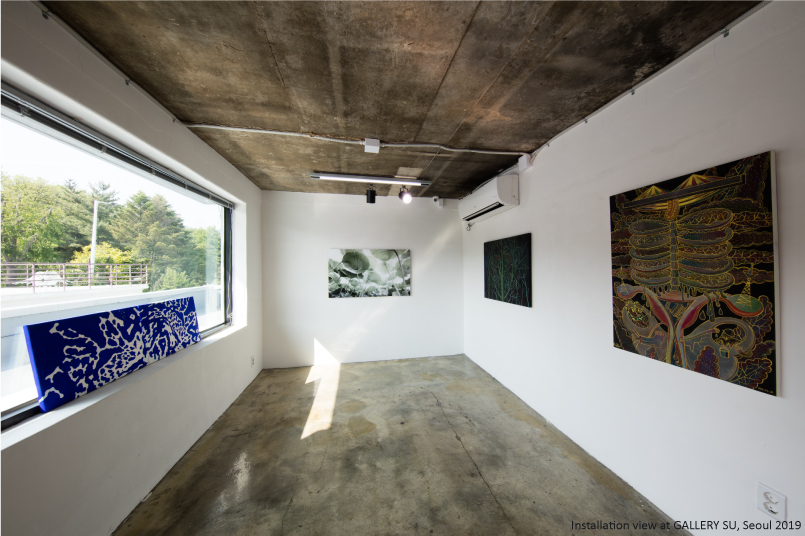
''Samantha & Vipassana: Indra’s Net" by GALLERY SU brings together a distinctively different group of Korean artists whose works explore the process of discerning the self and practices of meditation. The exhibition includes works by Yongho Kim, Goun Seo, Fi Jae Lee, and Sun Choi. It takes its point of departure from Samantha ('tranquility), which concentrates the mind and Vipassana ('insight'), which enables one to see. Artist's method of expression (medium and technique) and creation (labour of making) enables the artist to enter the state of samantha - free from distraction - while understanding and healing oneself through path of mindfulness. Four participating artists - Yongho Kim, Goun Seo, Fi Jae Lee, and Sun Choi- present their ways of practicing meditations within the works as a means of samantha and vipassana.
''Samantha & Vipassana: Indra’s Net" is curated by Hongchul Byun. The exhibition ends on June 16th.

KIM, Yongho
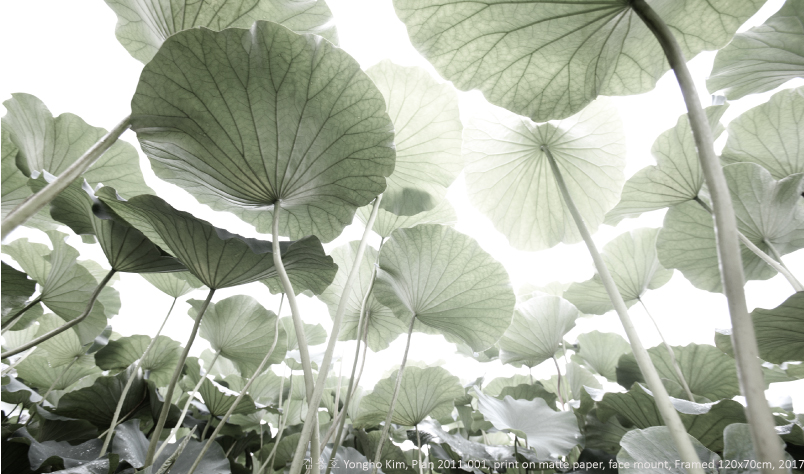
The well-known photographer Yongho Kim has presented a series of experimental exhibitions crossing boundaries between commercial and fine art photography with his keen sense, which pierces through contemporary generations. Through his lens, various subjects including millennial celebrities, brands, and cultural heritages interact with the public in a whole new angle. The series ‘Pian(彼岸)’ is a paraphrase of ‘param’ in Sanskrit meaning ‘the hill beyond the river, the land of hope, the enlightened world’. In the work, ‘Pian’ refers to the highest beyond big lotus leaves seen from the perspective of a pond skater. In the ‘Pian’ world beyond the forest of lotus, there exists the mundane world with faces full of anxiety and anguish.
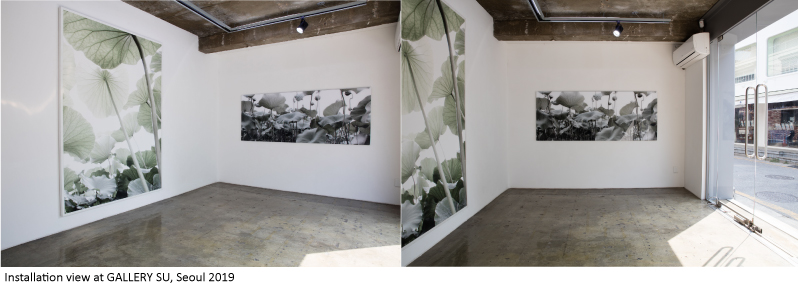
Goun Seo
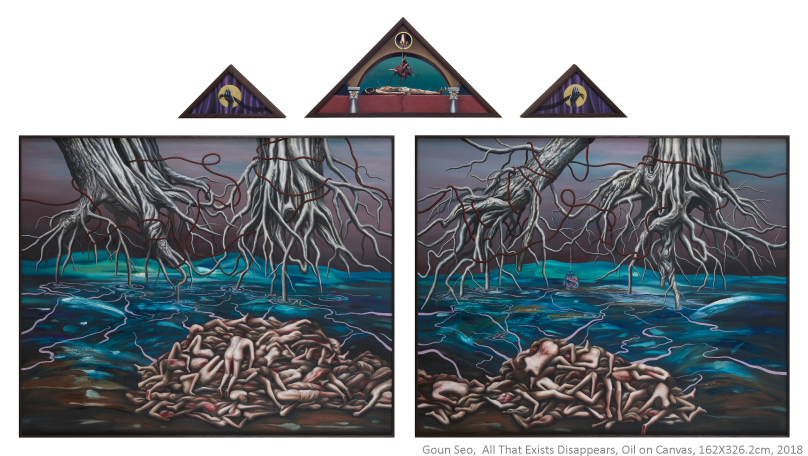
As Francis Goya and Romantic painters of the 19th century tried to find the answer to a depraved reality from within the imagery of death and horror, Goun Seo’s paintings illustrate meat hanging, skulls, and dead bodies. She overturns the imagery of death often conflated with the Gothic and the Occult into beauty and haunts the ideas behind it. The work ‘Four Paintings’ is inspired by the ancient Japanese Buddhist kusõzu, which depicts the nine stages of decay of a corpse. The work can be seen as contemplation on the human skull to realize the impermanence of life and body, which is a practice of meditation, Baekgolgwan(白骨觀). “Disciplinants, see the abandoned body in a cemetery with its blood and flesh entangled with tendons and turning all skin and bone. Watch this body carefully and your body shall turn the same way and never break free.” Her work embodies the practice of dispelling obsession from body and the self and stepping toward the realization of transience, life’s burden, and self-annihilation.
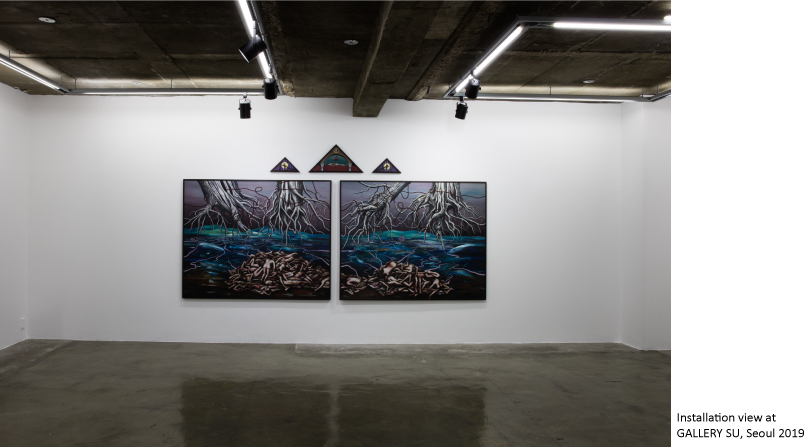
Fi Jae Lee
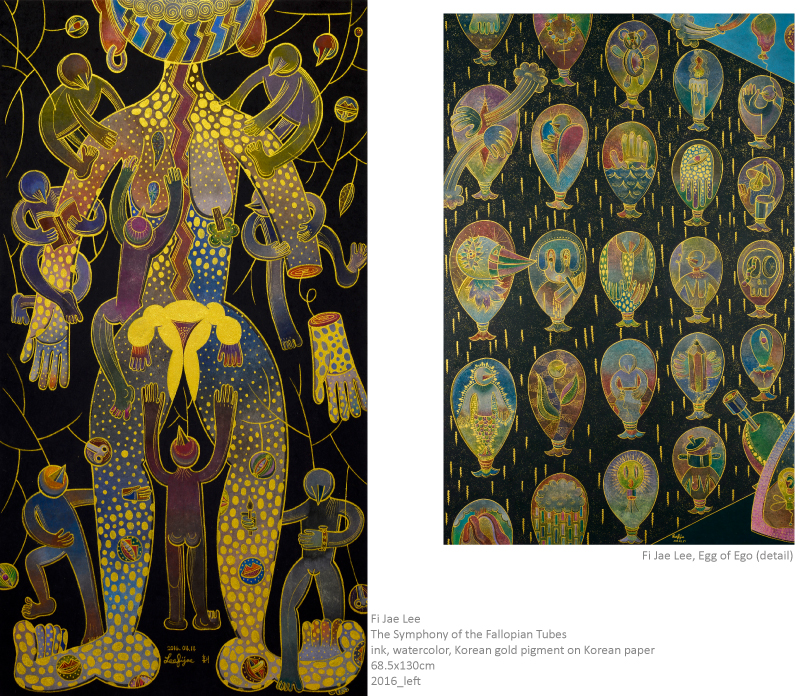
Fi Jae Lee’s work swings across various mediums - sculpture, performance, and painting. What is more interesting is that the artist is said to be a Christian and at the same time using the technique of Buddhist painting. She sometimes assists her mentor who paints altar portrait of Buddha and taught her the technique. Overall, the main subject across her works is to see the self. Borrowing from other’s eyes, mirroring, and practicing samatha and vipassana, Fi Jae Lee discerns, breaks down, and restructures her five skandhas(五蘊) and her body, which result in surrealist art. The work ‘Egg of Ego’ is illustrated in remembrance of the seeds of life upon altar, which fail to bloom due to social oppression against female artists. However, you need not resent nor mourn for the transience of things that are conditioned to change and die out.
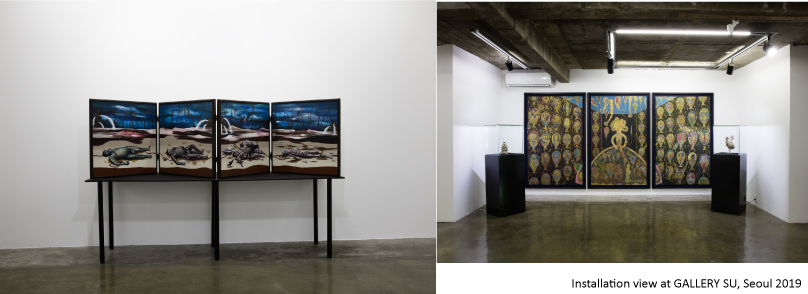
Sun Choi
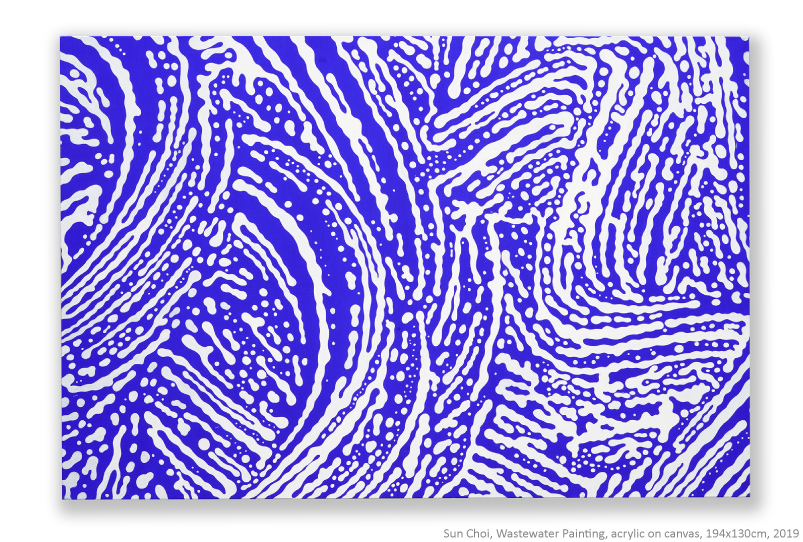
Sun Choi creates abstract imagery using breath, sewage, wastewater, and such. The abstract patterns with intense colors in his work are based on chance effects like Pollock or de Kooning, and in fact, they are directly taken from the marks of waste or discharge and brought onto the canvas. The work ‘Butterflies’ is created with coincidental patterns through the process of blowing ink by breath. Breathing, one of the four great material elements, is the beginning of life and the first key to meditation. The artist fills people’s breaths onto a canvas. Each breath contains a life. The imagery in the work ‘Wastewater Painting’ is a visualization of patterns of oil floating on wastewater and the wastewater itself. ‘Everything depends on the mind(一切唯心造)’. Like Master Wonhyo’s water from a skull depends on the mind of viewer, Sun Choi’s abstract images before learning about the actual substances of materials seem just beautiful.
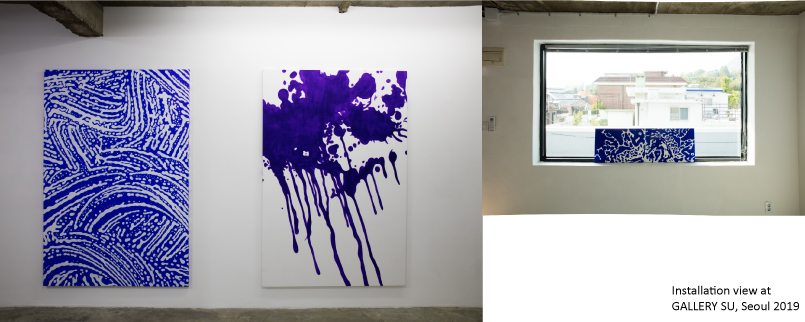
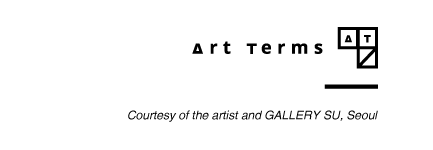
| Prev | [SHOWS] JANG HYUN JOO: 'Scenery, Close Yet Far' @ARTBIT GALLERY |
|---|---|
| Next | [Art Fair] Art Busan 2019 |
| List |